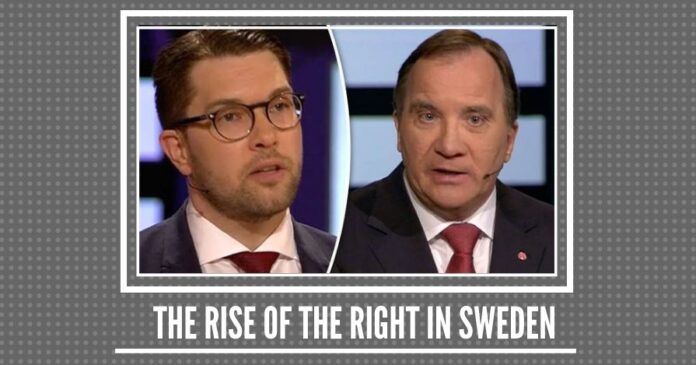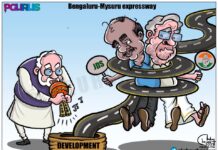
In Sweden, a Prime Minister can assume office as long as a majority in parliament does not vote against him or her
Sweden, a country having a rich heritage of equality, humanitarianism, crime novels, dark thrillers and great pop songs may finally open its political arena to the right-wing politicians. Sweden’s prime minister lost a vote of confidence in parliament, with the centre-right parties alliance bloc along with the Far-Right Sweden Democrats lobbied to strip him of his majority. The leader of the Social Democratic Party, Mr Stefan Lofven has been the Prime Minister for four years, will continue in a caretaker role until a new Swedish government can be formed that has the commandment of the Riksdagen, the national parliament.
The vote was mandatory after September 9, 2018, general election delivered a hung parliament. 204 out of the 349 members from Swedish Parliament voted against Centre-left Alliance, which managed to receive only 142 votes. Three other members were not present in the chamber during the vote, but neither the Left Bloc nor Right Bloc was able to fetch clear majority to form the next government. The nationalist Sweden Democrats (SD) won 17.6 per cent votes and 63 seats, up from 12.9 per cent votes and 49 seats in the last election. The SD’s success follows a rise in popularity of other far-right parties in Europe amid growing anxiety over national identity, the efforts of globalisation, the role of European Union and fears over immigration boosted conflicts in the Middle East and Africa.
In an attempt to form government Mr Ulf Kristersson has to seek support from either Centre-Left Bloc or Anti-Immigrant Sweden Democrats, which has 62 members and supported a motion of no-confidence to vote out then Prime Minister Mr Stefan Lofven
There are a considerable number of Europeans who are troubled by immigration issues and have a fear of a civil war like situation, due to rising immigrants and made voters incline towards Right Wing Parties. Swedish voters voted under same dilemma and discontent, which benefited Anti-Immigrant & Nationalist, Sweden Democrats the most. It only entered parliament in 2010, since then, it has become the third-largest party enjoying a massive popular support, a political success story in itself. The SD is struggling to change its political perception but there have been some scandals, and several party members have been expelled in recent years for racist behaviour. Traditionally, its supporters have been working-class men, who form an acute majority.
However, it should be pointed out that it was in 1991 – before Sweden joined the EU – that a populist anti-immigrant party (Ny Demokrati) first got into parliament. However, the big difference between SD and other populist parties with a general aversion to immigration and high taxes – like Ny Demokratior similar parties in Norway and Denmark – is that SD has a better political manifesto indigenous with the societal demands of Sweden. The left seems to be getting decimated swiftly across Europe – Italy, Sweden, Austria, Germany, Netherlands, Hungary, Poland, Switzerland, Denmark and France, and Right is the preferred option to deal with the present political concerns of the citizens according to some voters.
According to the Constitutional Structure in Sweden, a Prime Minister can assume office as long as a majority in parliament does not vote against him or her. Mr Andreas Norlen, a member of the centre-right Moderates was elected as Sweden’s parliamentary speaker, and he has given the centre-right bloc of parties two weeks to form a government, granting its leader a broad mandate that he may struggle to collate following inconclusive national elections. Moderates are largest among the four parties Centre-Right Alliance Bloc consisting of Moderates, Centre, Liberals and Christian Democrats.
In an attempt to form government Mr Ulf Kristersson has to seek support from either Centre-Left Bloc or Anti-Immigrant Sweden Democrats, which has 62 members and supported a motion of no-confidence to vote out then Prime Minister Mr Stefan Lofven. Mr Jimmie Akesson, the tallest leader of Sweden Democrats bloc has clearly shared his intention that his party will not hesitate in bringing down any government who will not address the burning issues of Immigration, Healthcare, Pension and Crime. He quoted “If Ulf Kristersson wants to be next Prime Minister, it can only happen with our help”. If there are more than 4 unsuccessful attempts to form a government, it will trigger fresh elections, something which has never happened before in the political history of the nation. The only possible option seems to be available with Ulf Kristersson, is forming an alliance with Sweden Democrats to prevent an early election which makes it sure that the right wing will finally play a role as the kingmaker and share power and will exercise its dominance in policymaking.
Note:
1. The views expressed here are those of the author and do not necessarily represent or reflect the views of PGurus.
- Impact of India’s 2019 Interim Budget on Fourth Industrial Revolution Technologies - April 11, 2019
- HOW THE EUROPEAN UNION IS RETALIATING TO HUMAN RIGHTS VIOLATIONS IN CAMBODIA AND MYNAMAR - November 9, 2018
- Judicialisation of politics in Pakistan: A By-product of unstable constitutionalism - October 29, 2018










